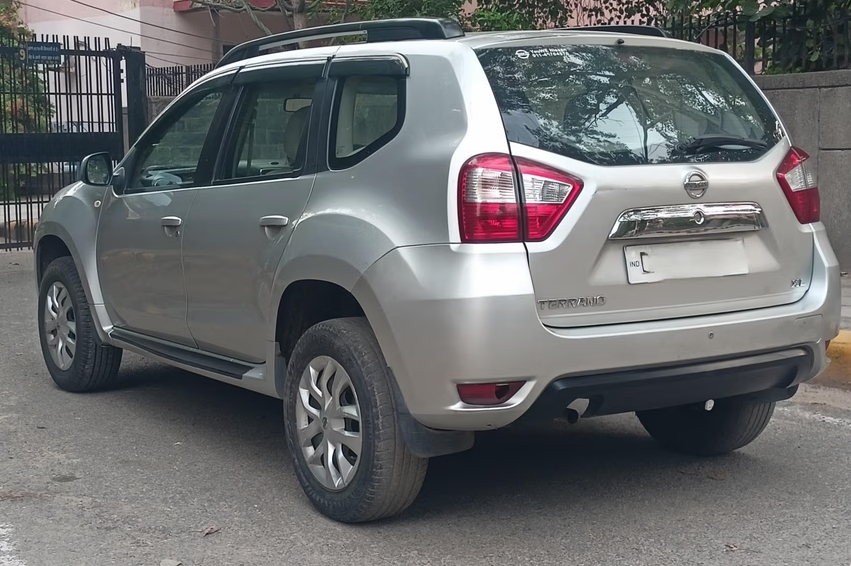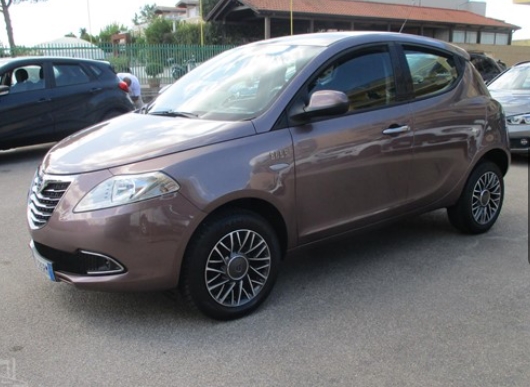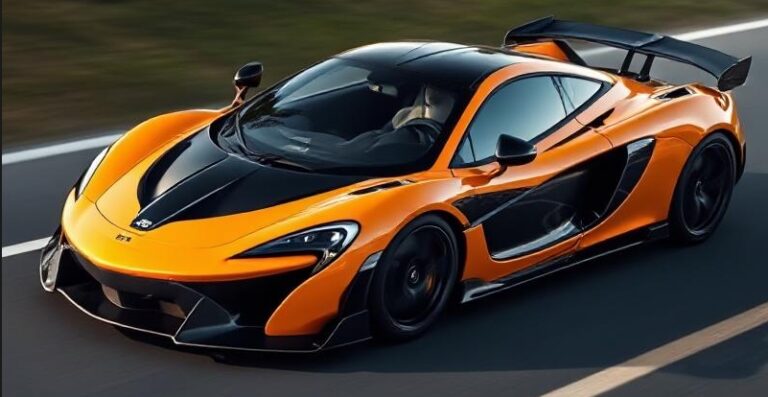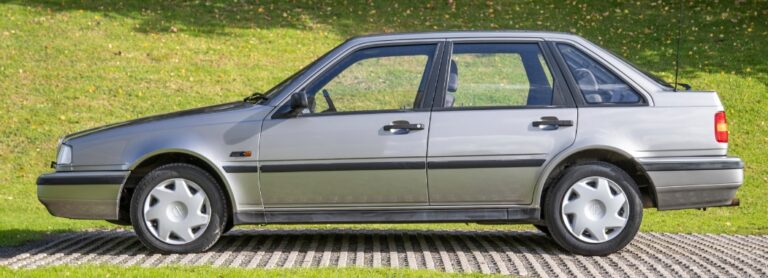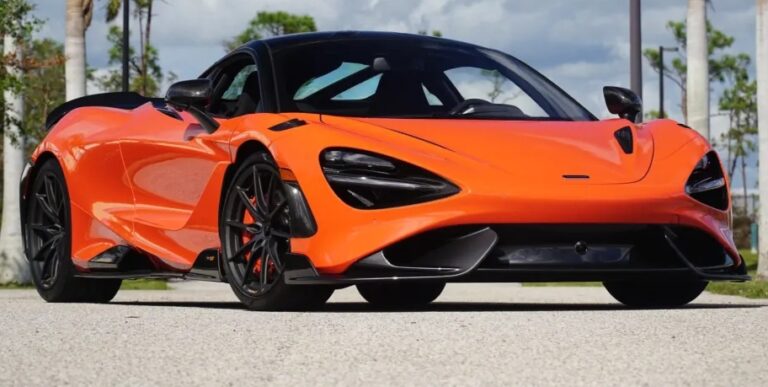The Shifting Terrain: A History of the Nissan Terrano Evolution
In the vast and ever-changing landscape of the automotive world, few nameplates tell the story of the SUV’s evolution quite like the Nissan Terrano. Born from the rugged DNA of a pickup truck, it grew into a European family favorite before being reborn as a modern crossover for emerging markets. Spanning three distinct generations and several continents, the Terrano’s journey is a fascinating chronicle of shifting consumer demands, engineering philosophies, and global automotive strategies. From its body-on-frame origins to its final monocoque form, the Terrano has always adapted to the terrain—both on and off the road.
Generation 1: The Original Off-Roader – The WD21 (1986–1995)
The story of the Terrano begins in the mid-1980s, a period when the concept of the “Sport Utility Vehicle” was solidifying. Japanese manufacturers, masters of the reliable and robust pickup truck, saw an opportunity to create more comfortable, family-oriented vehicles based on their proven commercial platforms. In August 1986, Nissan launched the Terrano (model code WD21), a vehicle that would be known in North America and other markets as the Pathfinder.
Built on the tough, ladder-frame chassis of the Nissan D21 “Hardbody” pickup, the first-generation Terrano was engineered for durability and off-road prowess. Its design was a pure expression of 1980s utility chic: boxy, purposeful, and featuring distinctive design cues. Initially launched as a three-door model, it was characterized by its unique triangular rear side windows, giving it a sporty and memorable profile. A more practical five-door version joined the lineup in 1989, featuring a clever design where the rear door handles were “hidden” in the C-pillar trim, a signature Nissan flourish that would reappear on future models.
Powertrains and Drivetrains: The engine lineup for the WD21 Terrano was tailored to different global markets. The flagship engine was the robust 3.0-litre VG30E V6, a single-overhead-cam powerplant producing around 145 horsepower. This engine gave the Terrano respectable performance for its era and a reputation for long-term reliability. In some markets, a 2.4-litre Z24i inline-four petrol engine was offered as a more economical base option.
Crucially for markets outside of North America, Nissan also offered a diesel. The 2.7-litre TD27 four-cylinder turbo-diesel became a cornerstone of the Terrano’s identity, particularly in Europe, Australia, and Asia. While not a powerhouse, its ample low-end torque and legendary toughness made it the engine of choice for serious off-roading, towing, and utilitarian use.
All models were equipped with a capable part-time 4WD system featuring a two-speed transfer case, allowing the driver to shift between 2WD (rear-wheel drive), 4WD High, and 4WD Low for tackling challenging terrain.
Trim Levels: Trim levels varied by region but generally followed a clear hierarchy:
R3M (Japan): Often the base or mid-range model in its home market, focusing on functionality.
DX (Export Markets): Typically the entry-level trim, offering the essentials. It came with steel wheels, manual windows, and basic cloth upholstery.
ST (Export Markets): A popular mid-range option that added features like alloy wheels, air conditioning, a better sound system, and upgraded interior fabrics.
Ti (Australia) / SE (North America): The top-of-the-line luxury trim. This level included all the features of the ST plus power windows and mirrors, a sunroof, cruise control, two-tone paint schemes, and often a limited-slip differential.
The WD21 established the Terrano/Pathfinder nameplate as a serious contender against the Toyota 4Runner (Hilux Surf) and Mitsubishi Pajero (Shogun). It was a true 4×4, loved by enthusiasts for its mechanical simplicity and rugged capability, setting a high bar for the nameplate.
Generation 2: The European Hero – The Terrano II / R20 (1993–2006)
As the 1990s dawned, the SUV market began to bifurcate. While North America embraced larger, more powerful models (leading to the R50 Pathfinder), Europe demanded a more compact, diesel-focused, and economical solution. To meet this need, Nissan entered a joint venture with Ford Europe. The result was the Nissan Terrano II (model code R20), launched in 1993 and sold in parallel as the Ford Maverick.
Designed and engineered primarily for the European market, the Terrano II was built exclusively at Nissan’s plant in Barcelona, Spain. While it retained a rugged body-on-frame construction, its design was a significant departure from the angular WD21. The R20 was softer, more rounded, and styled to be more appealing as a family vehicle that could handle urban duties as comfortably as rural tracks. It was offered in two body styles: a short-wheelbase (SWB) three-door and a long-wheelbase (LWB) five-door.
The Terrano II enjoyed an exceptionally long production run of 13 years, during which it received two major facelifts that kept it visually relevant.
Phase 1 (1993-1996): The original design featured round headlights and a simple, clean aesthetic.
Phase 2 (1996-1999): A significant facelift brought a revised front end with aggressive, rectangular quad-headlamps, a new grille, and updated bumpers. The interior also received a redesigned dashboard.
Phase 3 (1999-2006): The final update modernized the Terrano II once more, incorporating Nissan’s corporate “flying wing” grille of the era and further refinements to the interior, including a redesigned center console.
Powertrains and Drivetrains: Diesel power was the heart of the Terrano II. The venerable 2.7-litre TD27T turbodiesel from the previous generation was the launch engine, later updated with an intercooler to become the TD27Ti, improving both power and efficiency. This engine became synonymous with the Terrano II, earning a stellar reputation for being practically indestructible.
A 2.4-litre KA24E inline-four petrol engine was also available but was a far less common choice in the diesel-centric European market.
In 2002, to meet tightening emissions standards and offer more performance, Nissan introduced a modern 3.0-litre ZD30DDTi direct-injection turbodiesel engine in the top-tier models. While significantly more powerful, this engine developed a mixed reputation for reliability compared to the legendary 2.7 TD.
Trim Levels: The European trim structure for the Terrano II was extensive and evolved over its long life:
S / SLX: These were the workhorse base and mid-range trims. They typically featured steel wheels, cloth seats, and basic equipment, with the SLX adding niceties like power windows.
SR / SE: The sporty and well-equipped mid-to-high-range models. These trims added alloy wheels, fender flares, air conditioning, and often two-tone paint. The SE (Special Edition) was a very popular choice.
SVE / Elegance: Positioned at the top of the range, these trims offered a touch of luxury. Features included leather upholstery, wood-effect trim on the dashboard, a sunroof, and often the more powerful 3.0 Di engine in later years.
The Terrano II was a resounding commercial success. It perfectly captured the needs of European buyers, offering a blend of genuine off-road ability, family-friendly practicality, and robust diesel performance. It remains a common sight on European roads today, a testament to its enduring build quality.
Generation 3: The Crossover Rebirth – The Terrano D10 (2013–2022)
After the R20 ceased production in 2006, the Terrano nameplate lay dormant for several years. By the 2010s, the automotive market had undergone a seismic shift. Body-on-frame SUVs were now a niche product, while car-based monocoque crossovers had become the dominant vehicle type globally.
Leveraging the power of the Renault-Nissan Alliance, Nissan decided to resurrect the Terrano name for a new audience in emerging markets like India and Russia. This third-generation Terrano (model code D10), launched in 2013, was not a rugged, truck-based 4×4. Instead, it was a rebadged and restyled version of the highly successful, first-generation Dacia Duster.
This strategic move allowed Nissan to quickly enter the booming compact crossover segment with a proven, cost-effective product. While mechanically identical to the Duster, Nissan invested in differentiating the Terrano visually. It received a new front fascia with a signature Nissan V-motion grille and more angular headlights, redesigned tail-lights, new sheet metal for the doors, and a more premium-feeling interior with different air vents and upgraded materials. The goal was to position the Terrano as a slightly more upscale alternative to its Dacia/Renault sibling.
Platform and Powertrains: The D10 Terrano marked the nameplate’s definitive shift away from its body-on-frame roots. It was built on the Alliance’s B0 platform, a monocoque architecture that prioritized on-road comfort, fuel efficiency, and safety over extreme off-road articulation. It was offered in both front-wheel drive (FWD) and an optional all-wheel drive (AWD) configuration with a selectable lock mode for light off-roading.
The engine lineup was dominated by Renault’s acclaimed 1.5-litre K9K dCi turbodiesel, offered in two states of tune: a lower-powered 85 PS version for maximum efficiency and a more powerful 110 PS version with a 6-speed manual gearbox. Petrol options included a 1.6-litre and, in some markets like Russia, a 2.0-litre four-cylinder engine. An automated manual transmission (AMT) was also introduced later in its life cycle for added convenience.
Trim Levels (Indian Market Example):
XE: The absolute base model, equipped with power steering, air conditioning, and little else.
XL: Added more features like a basic audio system, front and rear power windows, and body-coloured bumpers.
XV: The high-spec variant, which included alloy wheels, dual airbags, ABS with EBD, fog lamps, and rear parking sensors.
XV Premium: The top-tier trim, boasting features like leatherette upholstery and a touchscreen infotainment system.
The D10 Terrano successfully carved out a niche for itself, selling well in India and Russia by trading on the strength of the Nissan brand and the Terrano name’s rugged connotations, even if the vehicle underneath was a different beast entirely.
.
THIS is GOOD stuff if your car is in need:

.
Conclusion: A Legacy of Adaptation
The evolution of the Nissan Terrano is a mirror reflecting the broader transformation of the utility vehicle. It began as the WD21, a quintessential body-on-frame 4×4 born from a pickup truck, embodying the rugged spirit of the 1980s. It then morphed into the Terrano II R20, a durable and practical SUV perfectly tailored to the diesel-loving European market of the 1990s and 2000s. Finally, it was reborn as the D10, a modern, monocoque crossover that prioritized efficiency and comfort for a new generation of buyers in developing markets.
While the engineering philosophy changed dramatically with each generation, a common thread remained: the promise of capability and dependability. Whether it was conquering a mountain trail or navigating a congested city street, the Terrano name always signified a vehicle ready for the journey. Its story is not one of a single, linear progression, but a remarkable tale of adaptation, demonstrating Nissan’s ability to redefine a legendary nameplate for the demands of a new era.
